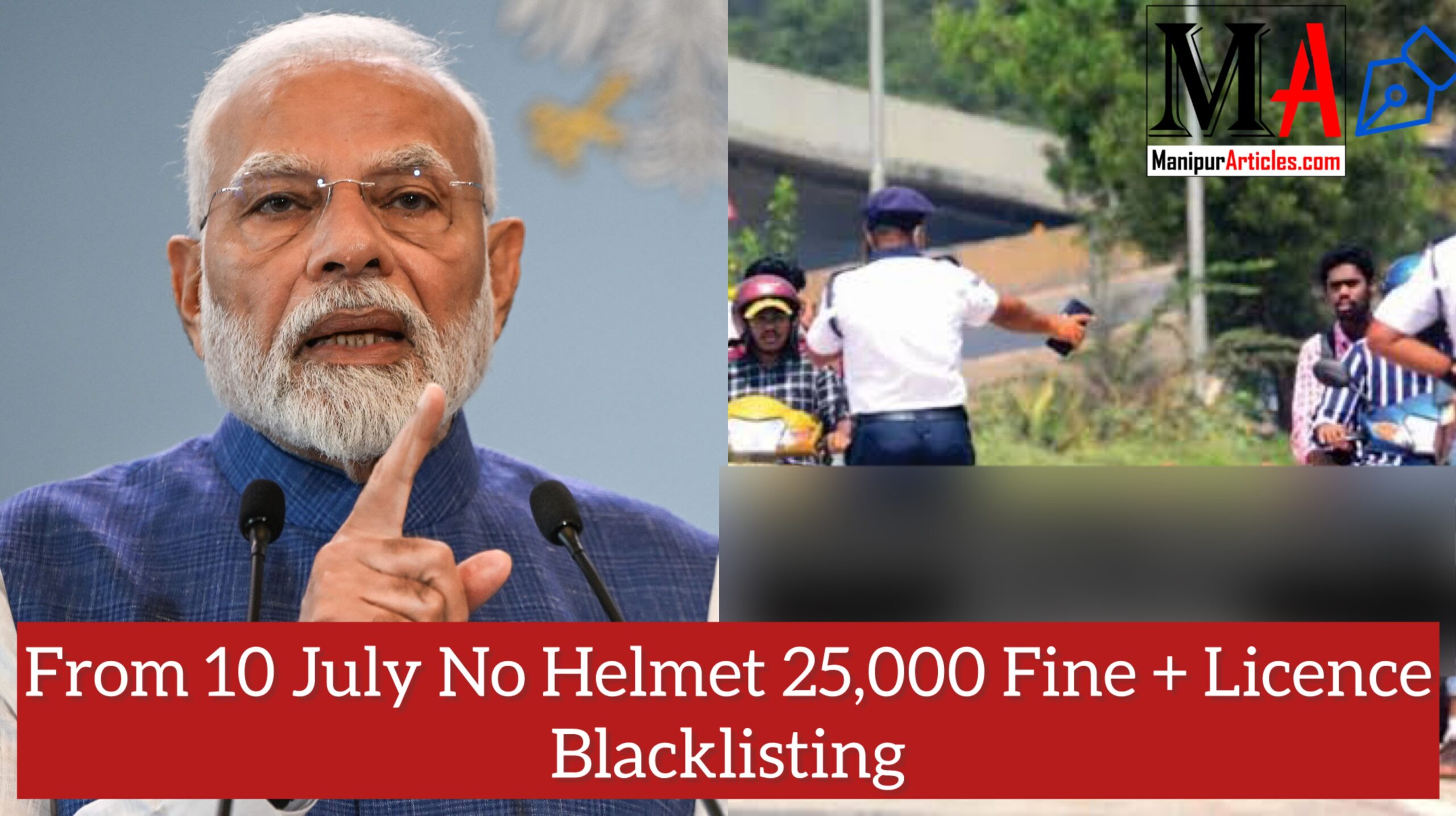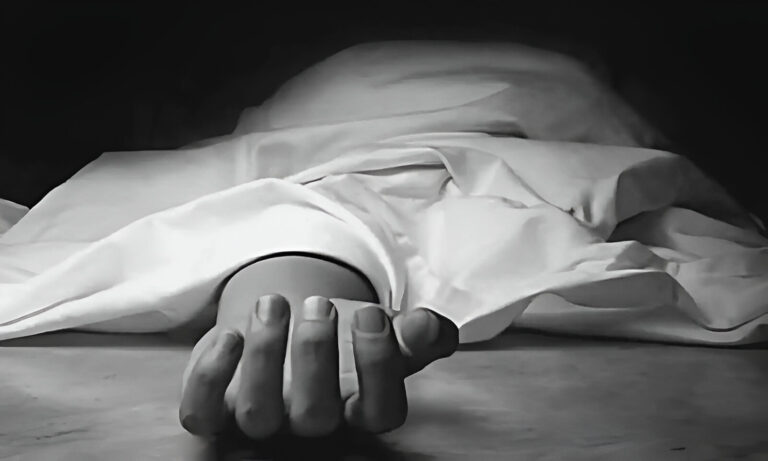From 10 July No Helmet 25,000 Fine + Licence
Blacklisting
Summary
A sweeping new traffic regulation is set to take effect from July 10, 2025, imposing hefty penalties on motorcyclists who flout helmet laws. Riders caught without helmets will now face a maximum fine of ₹25,000 and risk having their licences blacklisted. This move is part of a larger push to bolster road safety and deter negligent behaviour among two-wheeler users
New Traffic Rule 2025: Ride Safe or Pay the Price
Introduction
Hey there, fellow road warriors! Have you heard? Starting July 10, 2025, if you’re seen riding without a helmet, brace yourself for a fine that could burn a ₹25,000 hole in your pocket, and worse – you might lose your driving privileges. Scary, right? But here’s the thing – this new rule isn’t here to ruin your day; it’s all about keeping riders safe and reducing crashes on our roads.
Why This Rule? The Safety Stakes
- Head injuries are no joke: Helmets reduce head injury risk by over 70%. Imagine that – nearly three-quarters fewer serious accidents if every rider wore a proper helmet.
- Boosting accountability: A double whammy of steep fines and licence confiscation hits hard – much more than earlier punishments. Forgetting or ignoring your helmet now carries real consequences.
- Clearing the data fog: In India’s growing traffic chaos, two-wheeler accidents spike alarmingly. The aim here? Cut incidents, save lives, and ease the strain on healthcare services.
What Exactly Changes on July 10?
1. Jaw‑Dropping Fines
- Forget the old ₹1,000–₹2,000 slap on the wrist. Now, hop on a bike without a helmet and you’re staring down a ₹25,000 fine—on the high end of the penalty scale.
2. Licence Blacklisting
- One serious breach can get your licence flagged. That means:
- No riding for a set period
- Potential delays or hurdles when renewing your licence afterward
3. Broader Reach
- This crackdown applies to all riders, including pillion passengers. Expect stricter enforcement from cops across cities and highways.
Practical Perks
- Avoid fines: ₹25,000 isn’t pocket change.
- Keep your licence clean—no sudden blacklisting, no legal headaches.
- It’s simple: better safety habits, better peace of mind.
Will It Actually Help? Real‑World Impact
Model States
- Think of places like Kerala, where helmet rules and fines have already pushed accident rates down significantly. The numbers speak:
- Tamil Nadu often reports 30–40% fewer head injuries post-helmet enforcement.
- Drawing from global successes in countries like Thailand and Vietnam, where strong helmet laws halved fatality rates.
Equity Matters
- Authorities promise:
- Help for low-income riders, including discounted helmets and awareness campaigns.
- Partnerships with NGOs and helmet brands to launch “protect & ride” initiatives.
Living with the Change: Tips & Takeaways
1. Helmet Upgrade 101
- Look for a snug fit: your skin should move with the liner; strap should be snug under the chin.
- Covering your temple and back of the head? Check and check.
2. Know the Law Inside Out
- Both rider and pillion now must wear helmets.
- Helmet must be:
- Worn fastened
- In good condition: no big cracks, no loose parts compromising safety
3. Police Might Be Zero‑Tolerance
- From July 10, checkpoints and random stops are expected to spike. No helmet = no ride.
- Officers could seize your licence on the spot if you resist.
Is ₹25,000 Too Much? Let’s Talk Reasonably
Yes, It’s a Whopper
- Compared to subtle traffic fines, ₹25,000 is serious money.
But…
- Helmets typically cost ₹500–₹2,000 tops—a smart investment when compared to potential injuries.
- Remember: you’re not only paying for yourself, but for safer roads overall.
Making It Stick: Awareness & Infrastructure
Education, Education, Education
- Plans are underway for:
- Rider training camps
- School and college awareness drives
- Social media push with influencers and safety vloggers
Subsidies & Discounts
- Government discussions are ongoing to help purchase affordable, certified helmets.
- NGOs and helmet brands may support buy-one-give-one schemes.
Will This Change Behavior?
- People tend to respond to high-stakes consequences more than mild warnings.
- Helmet-wearing may become a cultural norm, not just a legal requirement.
- Families who once tolerated unsafe riding may now insist on protection—for their loved ones’ sake.
What You Should Do Today
- Buy or check your helmet—does it pass the fit and safety test?
- Prep your pillion—ensure they’re helmet-ready, too.
- Spread the word—share the regulation date (July 10!) with friends and family.
- Stay informed—watch for notifications on subsidies, training camps, and legal updates.
A Final Thought
Sure, ₹25,000 is hefty, but so is the cost of a lost life—or worse, lifelong head trauma. This regulation shakes us awake: riding without protection isn’t just risky—it’s reckless. If this law helps even one family keep a loved rider safe, it’s already a win.
So gear up, ride smart, and let’s make India’s roads safer—one helmet at a time.
Frequently Asked Questions
1. What qualifies as a certified helmet?
Look for ISI mark, or ECE/EEC stamps if it’s an imported model. These certifications prove the helmet meets safety standards.
2. Does the rule apply to pillion riders, too?
Absolutely. Both rider and pillion must wear fastened helmets, no exceptions.
3. Can I pay a reduced fine or challenge it?
₹25,000 is the maximum penalty. You can defend yourself in court but lowering the fine isn’t guaranteed.
4. What happens if my licence gets blacklisted?
You’ll be temporarily barred from riding. You’ll need to follow reactivation procedures before riding again.
5. Are there any financial help schemes to buy helmets?
Government and NGOs are planning subsidy schemes and giveaways—keep an eye out for local announcements.





